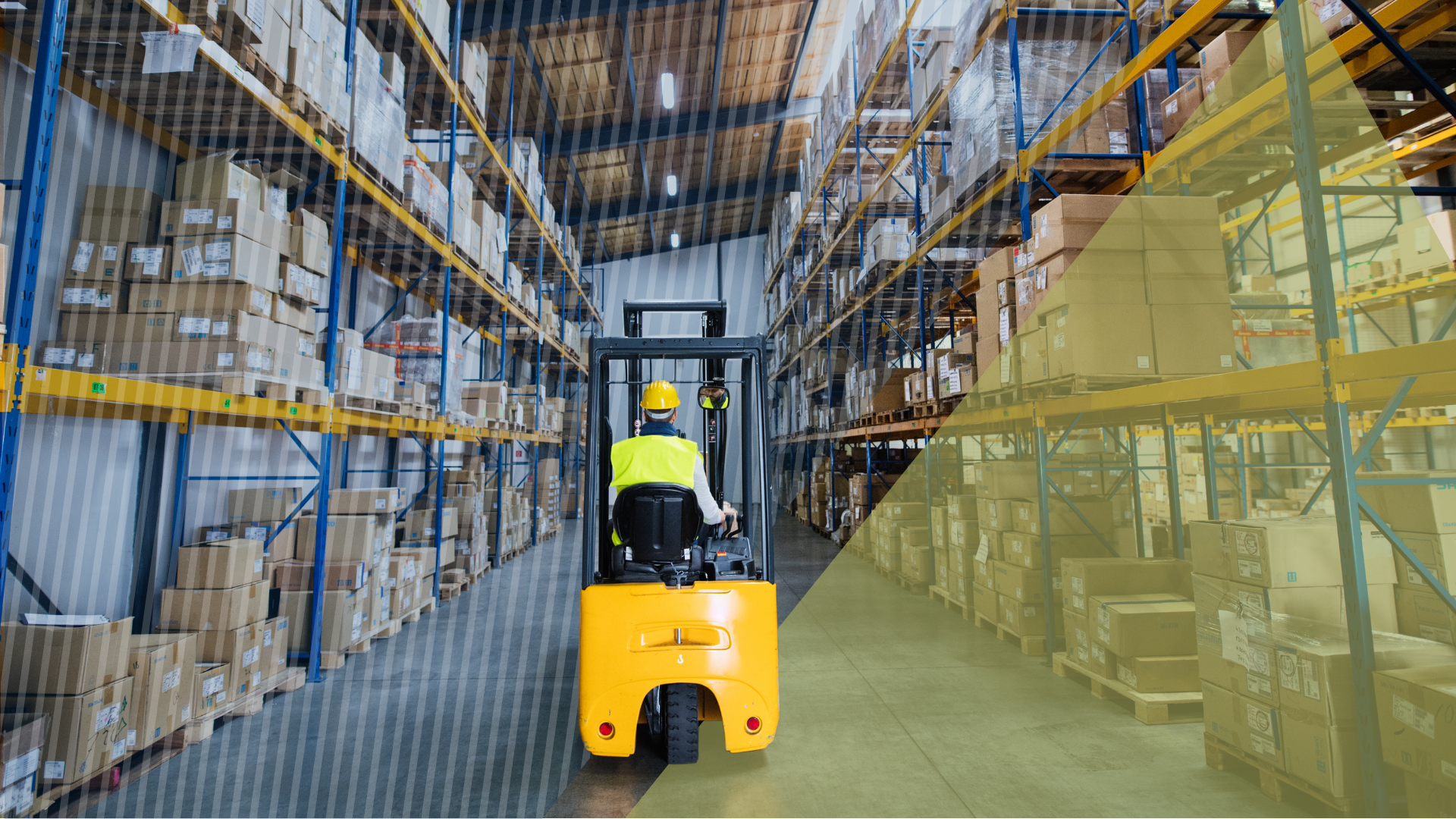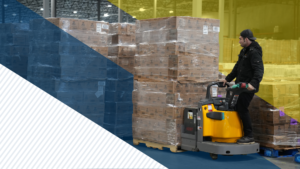Maintaining a cool warehouse during the hot summer months is important for ensuring the safety of employees as well as protecting inventory and maintaining efficient operations. In this article, we will cover some effective strategies businesses can consider to keep their warehouses cool.
Optimize the Ventilation of Your Warehouse Space
Proper ventilation helps maintain a comfortable warehouse environment for your staff. Optimizing ventilation and airflow in a warehouse involves several steps to ensure that air is efficiently circulated, reducing heat buildup and improving overall air quality. Some strategies to help involve installing exhaust fans and making sure airflow is unobstructed in your facility. Opening windows and doors can also facilitate natural ventilation. This allows cooler air to flow into the warehouse while letting hot air escape.
Tips:
- Assess Your Current Ventilation System. Conduct an audit on your current ventilation setup to identify areas that need improvement. Measure airflow in different parts of the warehouse using tools like anemometers to measure airflow
- Invest in Fans. Installing high-volume low-speed (HVLS) ceiling fans will help circulate large volumes of air. Use wall-mounted fans to direct airflow to specific areas. Place smaller, portable fans in areas where workers spend the most time.
- Place Fans Strategically: Place fans in locations where they can create cross-ventilation and maximize airflow.
- Position in Aisles to Move Air: Position fans at the end of aisles to push air down the aisles and prevent stagnant air.
- Use Exhaust Systems to Remove Hot Air. Install exhaust fans to remove hot air from the warehouse. Use roof ventilators to allow hot air to escape naturally.
- Improve Natural Ventilation. Open windows and vents to allow fresh air to enter and stale air to exit. Schedule this during cooler parts of the day to maximize efficiency. Use louvered vents that can be adjusted to control the flow of air. Use supply fans to help bring in cooler outside air, especially during cooler parts of the day.
- Use Air Circulation Systems. Install ductwork to direct air to different parts of the warehouse. Use air handlers to distribute conditioned air throughout the space.
- Use Barriers to Control Airflow. Using air curtains at doorways will prevent hot air from entering and keep cool air inside. Strip curtains can be placed in high-traffic areas to maintain airflow while allowing easy access.
- Conduct Regular Maintenance. Regularly clean fans and vents to ensure they are not blocked by dust and debris. Inspect ductwork for leaks and blockages that could impede airflow.
- Use Thermostats and Sensors. Smart thermostats will help you monitor and control temperature and airflow. Install sensors to monitor air quality and airflow, allowing for adjustments in real-time. Use automated louvers to control the flow of air and optimize cooling.
- Organize Storage For Airflow. Keep aisles clear and avoid overstacking products, which can block airflow.
Implement Cooling Systems to Reduce Heat Inside the Building
Selecting and installing the appropriate equipment, optimizing their placement, and maintaining them effectively is necessary to manage and reduce heat inside a warehouse. Systems like air conditioning units provide precise temperature control and enhanced comfort for workers, ensuring a consistently cool environment. Additionally, portable cooling units such as fans or spot coolers offer flexibility by targeting specific hot spots within the warehouse, providing relief where it is needed most.
Tips:
- Assess the Warehouse Environment. Identify sources of heat, such as machinery, lighting, and solar gain. Determine temperature zones that require more cooling based on heat levels and worker activity.
- Consider Zoning Strategies. Create different cooling zones for various parts of the warehouse, focusing cooling on high-traffic and high-heat areas. Use zone-specific controls to manage the cooling intensity in different parts of the warehouse.
- Choose the Right Cooling Systems. Several options for cooling systems can be used, depending on the active warehouse environment.
- Centralized heating, ventilation, and air conditioning (HVAC) systems are necessary for large-scale cooling.
- In dry climates, evaporative coolers can be used, taking advantage of water evaporation to cool the air.
- Portable air conditioners are flexible and mobile cooling, and can be employed for specific areas or temporary cooling needs.
- Spot coolers can be used to directly cool workstations or high-heat areas.
- Fine water mist systems can also be leveraged to lower temperatures and are ideal for open or semi-open areas.
- Optimize Placement. Place cooling units in areas with the highest heat concentration and where workers spend the most time. Position fans and air conditioners at elevated points in the warehouse to allow cool air to circulate downward.
- Install Insulation and Reflective Materials. Insulate walls, ceilings, and roofs to prevent heat transfer from outside. Regularly inspect insulation in walls, ceilings, and roofs to ensure it is intact and effective. Seal any gaps or leaks that may be allowing hot air to enter the warehouse. Consider upgrading to more efficient insulation materials if current insulation is inadequate. Apply reflective coatings or paint to roofs and exterior walls to reduce heat absorption.
- Combine with Ventilation Systems to Exhaust Heat. Integrate cooling systems with optimized airflow and ventilation systems.
- Use Automation and Smart Controls to Maintain Temperature. Use smart thermostats to control cooling systems based on temperature and occupancy. Install temperature and humidity sensors to monitor conditions and adjust cooling systems accordingly.
- Maintain Regularly. Visually inspect cooling equipment such as fans, air conditioners, and vents for any signs of wear or malfunction. Regularly clean filters, fans, and vents to ensure efficient operation. Periodically inspect cooling systems for leaks, wear, and other issues. Schedule regular servicing of HVAC and other cooling systems to maintain performance.
- Add Shade and Shelter Solutions. Install shade structures over loading docks, outdoor work areas, and near entrances. Use awnings over windows and doors to reduce heat gain.
Monitor and Adjust Cooling Measures Throughout the Summer
Implementing temperature monitoring devices, such as thermostats and sensors, allows you to keep a close eye on warehouse conditions. These tools will allow your team to make quick adjustments to cooling your building, ensuring that the indoor climate remains comfortable and efficient. Workers can also provide valuable insights by reporting hot spots and discomfort, allowing you to address these issues quickly.
Tips:
- Employee Training: Train employees on the importance of reporting temperature-related issues and how to use monitoring equipment effectively.
- Install Monitoring Equipment. Place temperature sensors throughout the warehouse to continuously monitor the temperature in different areas. Use humidity sensors to track moisture levels, which can affect perceived temperature and comfort. Install smart thermostats to control HVAC systems and adjust settings based on real-time data.
- Use Automation and Smart Controls. Implement automated systems that can adjust cooling measures based on sensor data. Set schedules for cooling systems to operate more intensely during peak hours and reduce output during off-hours. Utilize systems that allow for remote monitoring and adjustments through mobile apps or web interfaces.
- Analyze Data Regularly. Continuously log temperature and humidity data for analysis. Analyze the data to identify trends and patterns, such as areas that consistently get hotter or times when cooling is most needed. Generate regular reports to assess the performance of cooling measures and identify areas for improvement.
- Adjust Based on Feedback. Collect feedback from warehouse workers about hot spots or areas where cooling seems insufficient. Use the feedback to adjust thermostat settings, fan speeds, and other cooling measures to better meet the needs of the workforce. Be prepared to implement temporary solutions, such as portable fans or spot coolers, in response to immediate issues.
- Optimize Airflow Based on Changing Temperatures. Adjust the speed and direction of fans to optimize airflow based on temperature readings and feedback.
- Implement Dynamic Cooling Zones. Create dynamic cooling zones that can be adjusted based on real-time conditions and occupancy.
- Monitor Energy Consumption. Install energy meters to monitor the energy consumption of cooling systems. Analyze energy usage data to identify opportunities for improving energy efficiency. Adjust cooling measures to balance comfort and energy costs, avoiding overcooling.
- Emergency Preparedness. Have backup cooling solutions ready for extreme heat days or in case of equipment failure. Ensure there is a clear communication plan for informing workers about adjustments to cooling measures, especially during heatwaves.




